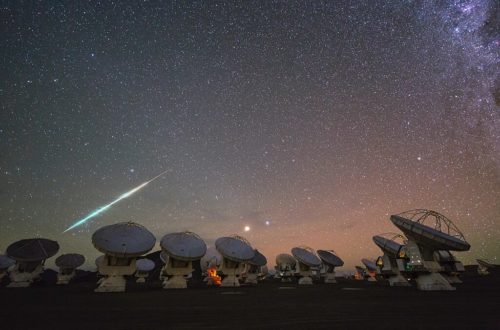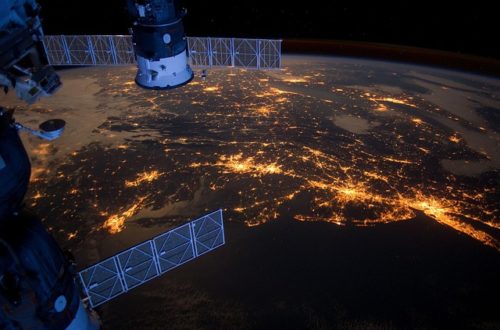Stargazing Calendar for April 2023
Looking for the April 2025 stargazing calendar?
Hello fellow stargazers! This month the big event will be a rare hybrid solar eclipse, but unfortunately it will be visible to only a few small areas of the world. For the rest of us, we have two large objects at opposition: dwarf planet Haumea as well as large asteroid Iris. There will also be two meteor showers as well as many conjunctions.
The first notable astronomical event happens only on April 11. Mercury will be at highest altitude in evening sky and at greatest eastern elongation. This means the planet Mercury will reach the furthest point away from the Sun in the evening sky. Mercury is the closest planet to the Sun and it is very difficult to observe most of the time due to the Sun’s glare. But now is the best time to observe this elusive planet! It will shine brightly (and visible to the naked eye) at an apparent magnitude of -0.0 and reach as high as 17° above the horizon at sunset. Look in the constellation of Aries.
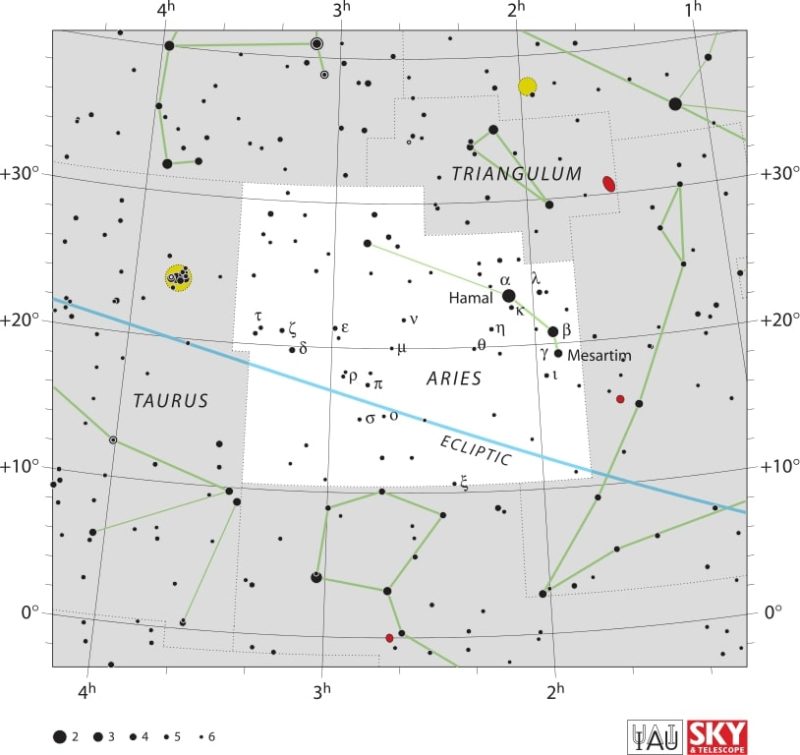
Would you like to be notified of stargazing events?
Then on April 15, there will be a conjunction of the Moon and Saturn. The two bodies will pass within 3°29′ of each other in the constellation of Aquarius. The Moon will be at apparent magnitude -11.0, and Saturn at 0.8. On the same day the Moon will be at perigee, meaning it will be closest to the Earth in its orbit and thus much brighter (and larger) than usual.

On April 20, there will be a hybrid solar eclipse, meaning an annular/total eclipse. A total eclipse is when the Moon completely obscures the Sun, while an annular one is when the Moon is slightly smaller than the Sun and a small ring called annulus remains visible. Now a hybrid solar eclipse is when it shifts from one to the other in different parts of the world. These types of eclipses are rather rare. This particular eclipse will be visible in western Australia, East Timor and eastern Indonesia, as well as in the surrounding areas as a partial one. Remember to never look directly into the Sun, especially through binoculars or a telescope. Keep your eyes safe! See more information in NASA’s chart below:
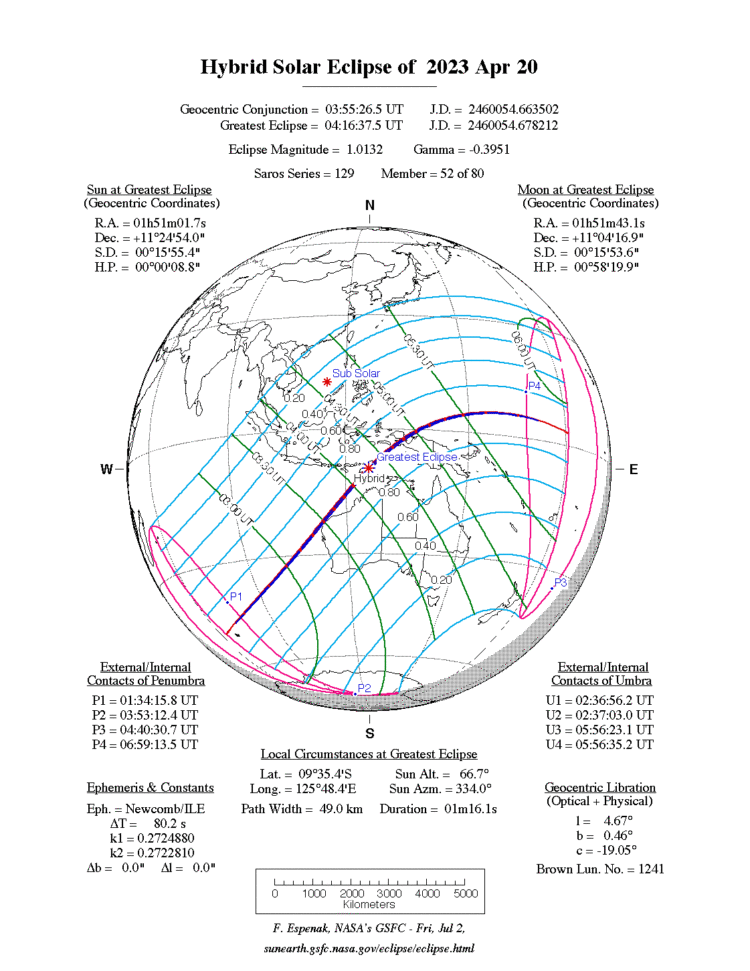
On the same day, the dwarf planet Haumea will be at opposition, meaning it will be opposite to the Sun in the sky. At around midnight local time, it will reach the highest point in the sky, which happens to be in the constellation of Bootes. At around the same time the dwarf planet will also come closest to the Earth (perigee) and will be at its brightest at apparent magnitude of 17.3. It will be at 49.19 AU from Earth, beyond the orbit of Neptune. This dwarf planet was named after Haumea, the Hawaiian goddess of childbirth.

You will need at least a 4 inch telescope or even more to see Haumea. Even then the best you’ll get is a star-like dot. So why bother, you ask? Well, since its discovery in 2004, new discoveries keep making it stranger and more interesting. Two moons were discovered around Haumea in 2005 (Hiʻiaka at 310 km in diameter and Namaka at 170 km). Then in 2017, a ring system was discovered. Haumea is the only dwarf planet (so far) known to have rings. The dwarf planet is also unusual in its shape. It has an elliptic shape of where its major axis is twice as long as its minor one (also known as a Jacobi ellipsoid). The major axis is about 2,100 km and the minor one is about 1,074 km. The dwarf planet rotates extremely fast at 3.9 hours and it has a mass of 1/3 of the mass of Pluto. Not that you would be able to see any of those things yourself, but I for one, like to stare at small star-like dots like this one and imagine all the beauty and strange new worlds that they hold!

On April 21, there will be a conjunction of the Moon and Mercury. The two bodies will pass as close as 1°53′ of each other while sharing the same right ascension in the constellation of Aries. The Moon will have an apparent magnitude of -8.1 and Mercury of 2.1.
Then on April 23, the Lyrid meteor shower will peak. We will be able to see up to 18 meteors per hour on average, assuming perfect conditions. Some meteors will also be visible between April 16 to April 25. They will appear to radiate from a point right at the edge of the constellation of Lyra, near the the constellation of Hercules. They originate from debris left by the comet C/1861 G1 (Thatcher).
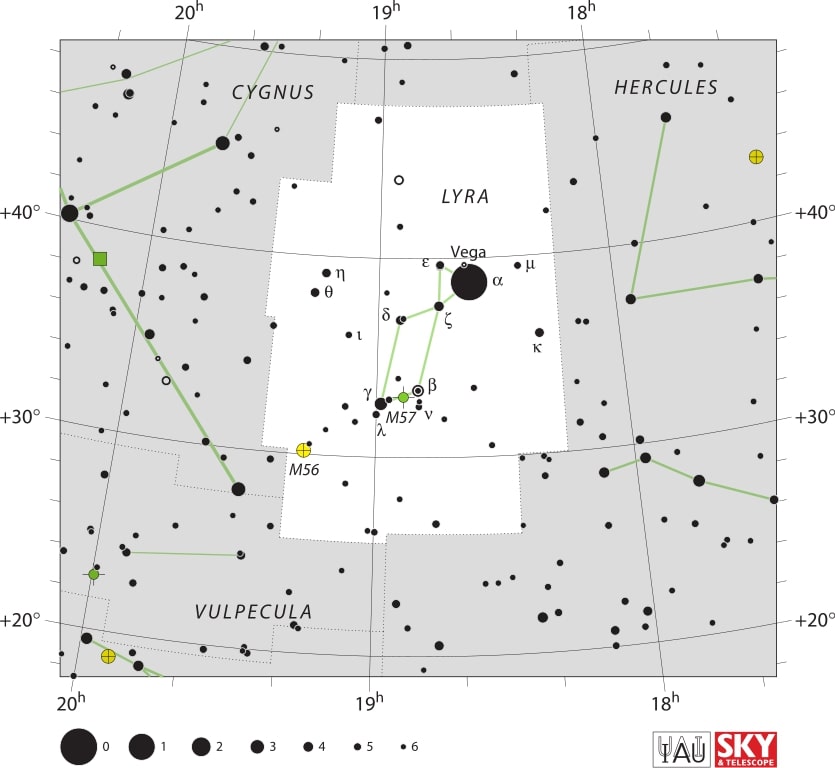
On the same day, there will be a conjunction of the Moon and Venus. The two bodies will pass as close as 1°18′ of each other while sharing the same right ascension in the constellation of Taurus. The Moon will have an apparent magnitude of -10.3 and Venus of -4.1. At about the same time, they will also make a close approach known as an appulse.

On April 24, the π-Puppid meteor shower will peak. It is a small meteor shower with a variable rate of meteors. They will appear to radiate from the constellation of Puppis. Some meteors may also be visible from April 15 to April 28, but only to observers from the southern hemisphere. They originate from debris left by comet 26P/Grigg-Skjellerup. What’s interesting is that Jupiter has perturbed the orbit of this comet and so the future of the Pi-Puppid meteor show is uncertain.

Then on April 25, there will be a conjunction of the Moon and Mars. The two bodies will pass as close as 3°13′ of each other while sharing the same right ascension in the constellation of Gemini. The Moon will have an apparent magnitude of -11.4 and Mars of 1.3. At about the same time, they will also make a close approach known as an appulse.
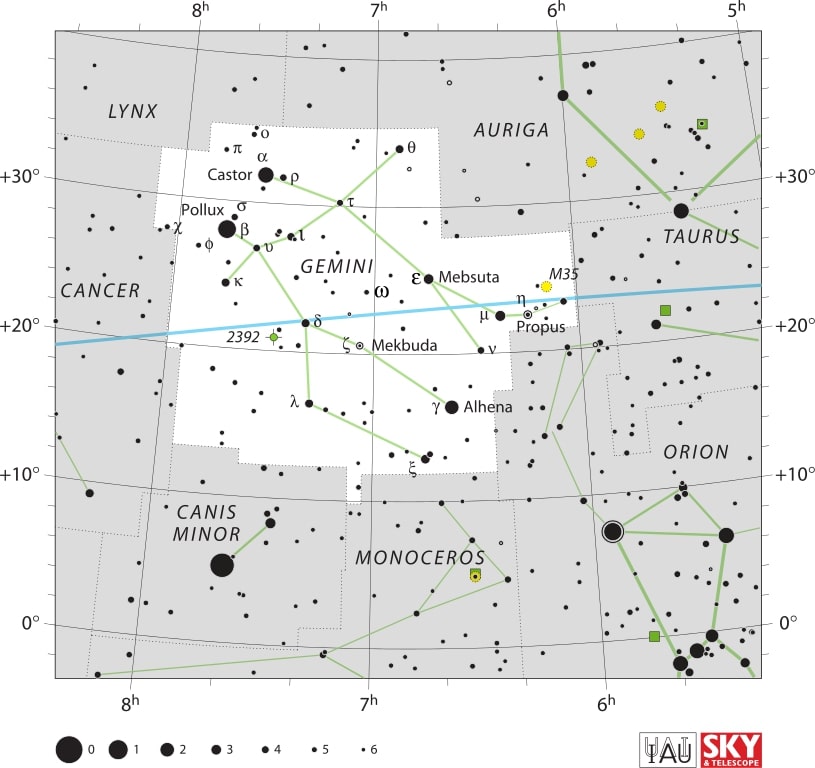
Finally on April 30, the asteroid 7 Iris will be at opposition. This means it will be opposite to the Sun in the sky and at around midnight local time, it will reach the highest point in the sky. At around the same time the large asteroid will also come closest to the Earth (perigee) at a distance of 1.927 AU and will be at its brightest at apparent magnitude of 9.6. Look for the asteroid in the constellation of Libra. It was discovered in 1847 by John Russell Hind and named after the rainbow goddess Iris from Greek mythology. Iris is not perfectly spherical, but its mean diameter is about 200 km.


Moon phases
As you know, the Moon has a big impact on the visibility of celestial bodies in the night sky. So here are the Moon’s phases for this month:
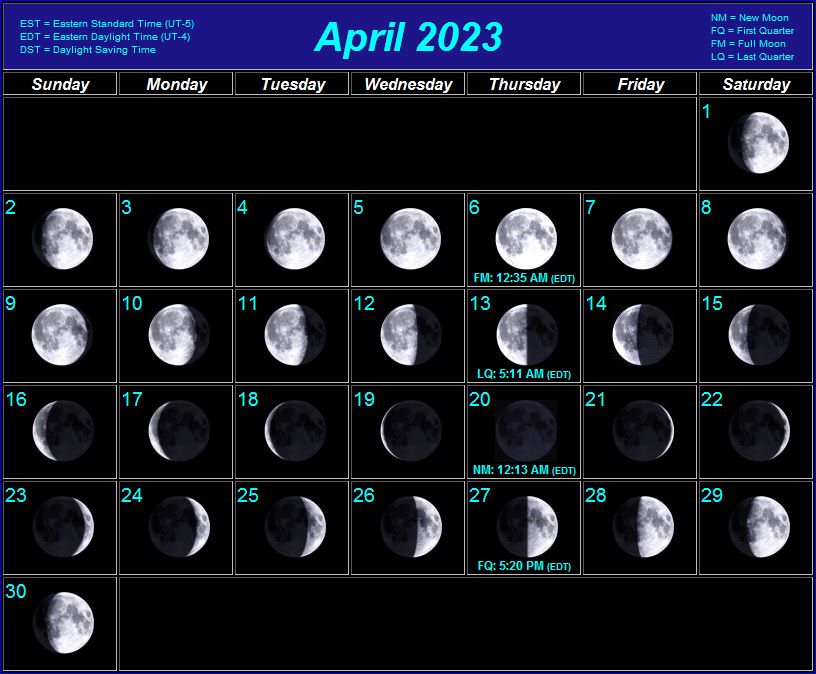
Positions of the planets this month
Mercury: The closest planet to the Sun can be seen at dawn and dusk travelling across the constellation of Aries. This planet, being the closest to the Sun, will appear to move quickly in the night sky and its position will change in the following weeks.
Venus: The sister planet can be seen near Mercury travelling across the constellation of Taurus. Just like Mercury, Venus can only be seen at dawn and dusk.
Mars: The red planet can be seen in the constellation of Gemini.
Jupiter: The gas giant is visible in the constellation of Pisces. Jupiter can easily be spotted with the naked eye, even in highly illuminated cities.
Saturn: The ringed giant can be seen with the naked eye in the constellation of Aquarius.
Uranus: The gas giant can be seen in the constellation of Aries with the use of a telescope.
Neptune: The blue giant requires a telescope pointed in the constellation of Pisces in order to be seen.
Positions of dwarf planets and large asteroids this month
Ceres: The asteroid belt’s lone dwarf planet can be seen in the constellation of Coma Berenices with the help of a telescope.
Vesta: This large asteroid can be seen in the constellation of Pisces with a telescope.
Pallas: The asteroid can be observed with a telescope in the constellation of Monoceros.
Pluto: This distant dwarf planet can be found in the constellation of Capricornus with the help of a large telescope.
Major astronomical events next month
- May 5 – Penumbral lunar eclipse
- May 6 – η-Aquariid meteor shower peak
- May 8 – Comet C/2020 V2 (ZTF) at perihelion
- May 9 – η-Lyrid meteor shower peak
- May 9 – Comet C/2020 K1 (PANSTARRS) at perihelion
Conclusion
And there you have it! Which of the astronomical events are you looking forward to the most? The hybrid solar eclipse, Haumea and Iris at opposition, the two meteor showers, or the conjunctions? Let us know in the comments below.
Sources:
- Planetary ephemerides produced by NASA’s Jet Propulsion Laboratory (JPL)
- International Meteor Organization
See also:
- Previous month’s calendar: Stargazing Calendar for March 2023
- Next month’s calendar: Stargazing Calendar for May 2023
Would you like to receive similar articles by email?



